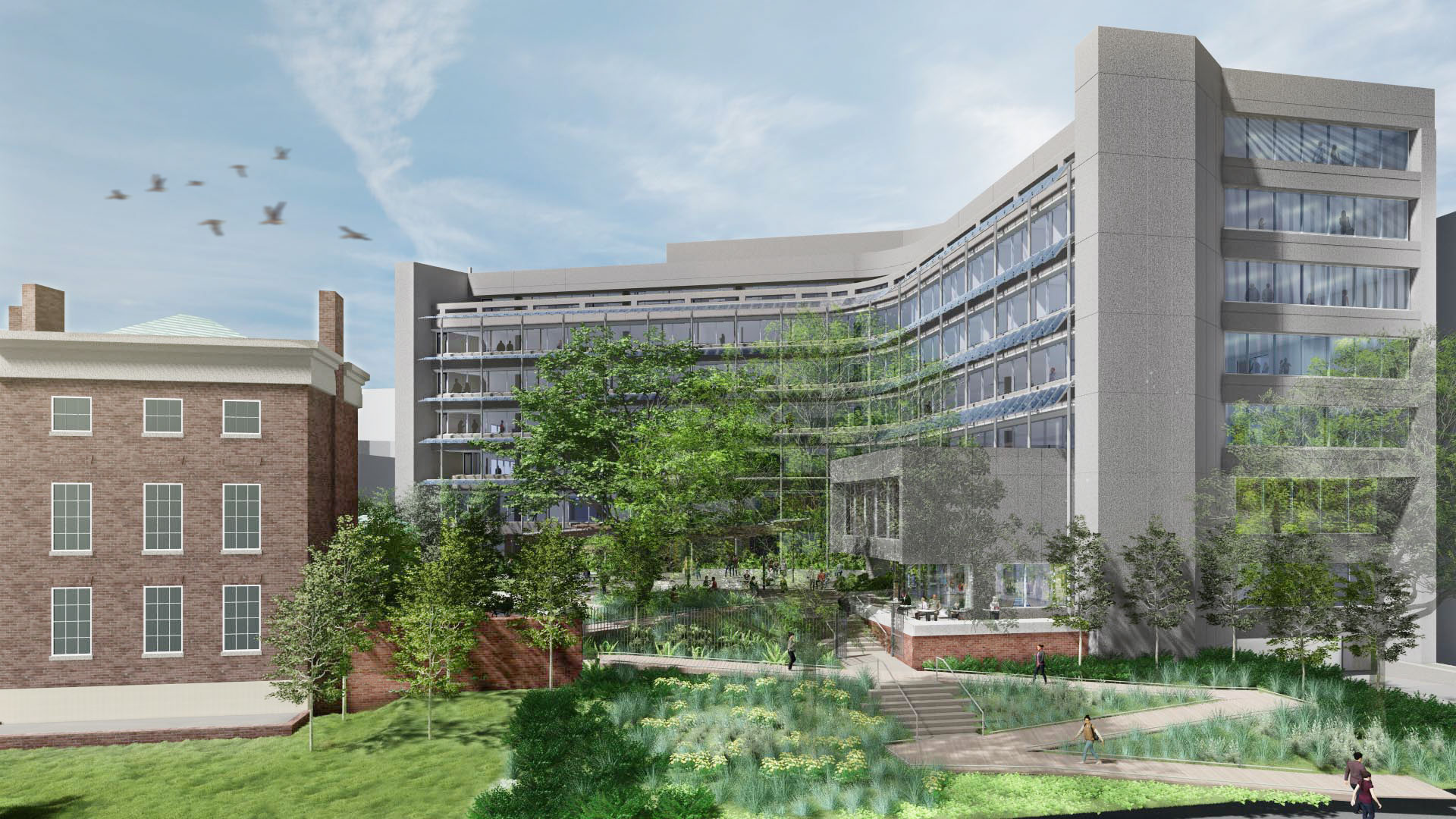

THE LATEST DESIGN BY EHDD IMAGINES AIA'S RENEWED WASHINGTON, D.C., HEADQUARTERS AND CAMPUS
The greenest buildings are buildings that already exist, which is why The American Institute of Architects’ (AIA) Board of Directors made the decision to fully renovate–not rebuild–the organization’s 50-year-old headquarters. The project is one of the first fully decarbonized major building renovations in the United States.
West Coast-based architecture firm EHDD created the design to transform AIA’s campus into a high-performance, high-impact space. With AIA and its stakeholders, EHDD adopted seven principles to reflect and guide the project’s “Design Advocacy.”
- Equity and human rights
- Architecture that strengthens our communities
- Values-based advocacy and the power of design
- A sustainable future
- Protecting communities from the impact of climate change
- Economic opportunity
- Investing in the future
Construction begins soon on the Washington, D.C. landmark. Throughout the project, AIA will share progress on this industry-leading renovation that celebrates Design Advocacy, elevates the communities who help build its rich history, and serve as a model for sustainability, equity and collaboration.
Building on a history of preservation
AIA restored its first Washington office space, The Octagon, as one of the country’s earliest preservation projects. When the organization outgrew The Octagon in 1964 and made plans to build, it invited members to submit designs for consideration. One requirement from submissions: preserve The Octagon. Decades later, civic engagement and safeguarding historic spaces remains at the foundation of the renewal project.
To guide this once-in-a-generation renewal, AIA turned to its valued community of climate experts, members, staff, and emerging architects, including six students from Historically Black Colleges and Universities (HBCUs) in a unique internship program to envision a post-COVID workplace of the future. Guillaume Atanga, a student from the University of the District of Columbia, says the thing he appreciates most about designing with AIA is the impact this project will have on sustainability.
“Not only is it a new type of architecture and design, but it’s leading the way. It is making a statement: ‘We want people to be sustainable and we are doing it first,’” said Atanga.
A space that will serve diverse communities needs to reflect unique points of view, said Stephen Ayers, FAIA, Project Executive.
“We relied on the expertise of architects and design experts to create design elements and select materials that are not only climate-friendly and cost effective, but also help improve the welfare of all people who use the space,” said Ayers. “Much research has gone into how space affects a person’s mood, productivity, and health, and those considerations will be reflected throughout every element of the building.”
Beyond serving AIA members and staff, the redesigned space will be universally accessible, include social galleries, respite and lactation lounges, and offer IT hubs for accessible, seamless technology use. The public spaces will welcome guests to learn about and celebrate architecture through exhibitions and lectures. Plans are being made to establish a National Center for Architecture & Design (NCAD) to further AIA’s vision and mission and create a new cultural institution focused on national architecture and the profession at large. Meanwhile, the campus will continue providing a consistent revenue source for the organization; it has long been a popular spot for hosting business meetings and social events.
Designed to sustain the future

A design showing how the PV sunshade structure will provide passive shading, glare control, and active solar energy production.
Built in 1973, the existing Brutalist building has dated, single-pane windows and uninsulated exterior walls which fall far short of meeting the AIA’s Framework for Design Excellence. The renovations will exceed AIA’s 2030 Commitment standards for fossil-fuel use reduction by fully electrifying the building, reducing energy use by 58 percent, and serving the building through a 100 percent renewable energy mix. Embodied carbon from materials and construction is cut in half, as compared to a typical new building through building reuse and a rigorous material vetting process. All remaining embodied carbon will be offset through an innovative agreement with Habitat for Humanity, where AIA has pledged $500,000 to purchase and install solar panels in 50 or more homes in Virginia.
The building’s existing envelope will be upgraded to exceed code minimum performance standards and enhanced with a new photovoltaic (PV) panel sunshade structure. Amorphous silicon PV panels create a continuous ribbon across the entire width of the façade, adjusting in tilt to optimize their orientation as they move from south to west; a future-forward and site-responsive compliment to the existing ribbon window design. An additional layer of frit patterning in the PV glass assembly creates a dappled light effect that evokes the sense of movement and time as the sun moves across the building.
“This dynamic experience is especially important at the new workplace levels where shared, flexible seating areas are zoned along the window line for all staff to access this dappled daylight and views to the reimagined plaza garden,” said EHDD partner Rebecca Sharkey, AIA. “The new design will transform the existing building into a high-performance, site-responsive, sensory and biophilic experience, a visible statement of change that speaks to AIA’s priorities and the power of design to create positive change,” said Sharkey.
Want to learn how high-performance design can benefit your project? Partner with an architect. They’ll work with you to develop affordable, high-performance, climate-positive design solutions. Need talking points? AIA’s ROI of High-Performance Design breaks down the value across eight key areas. Renovate, Retrofit, and Reuse: Uncovering the hidden value in America’s existing building stock contextualizes the tremendous opportunity in existing buildings, using economic data, expert insights, and compelling case studies.